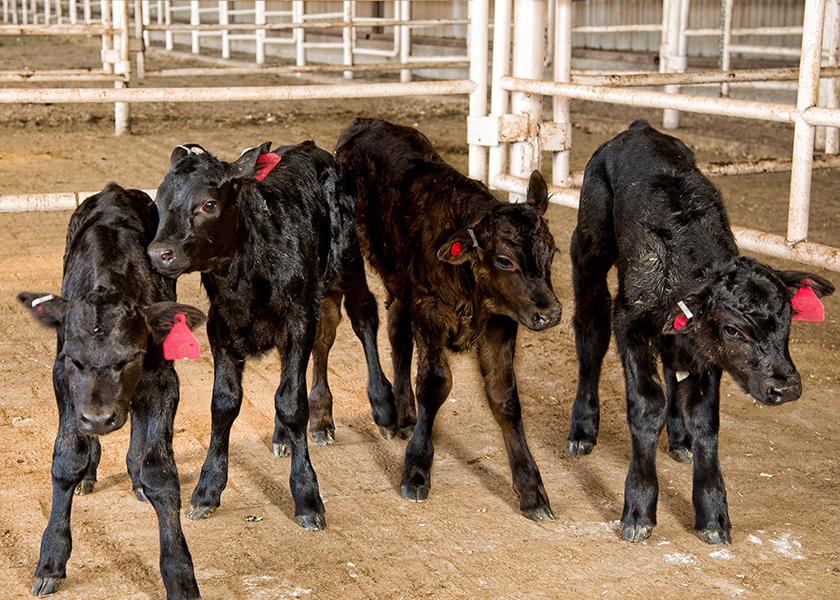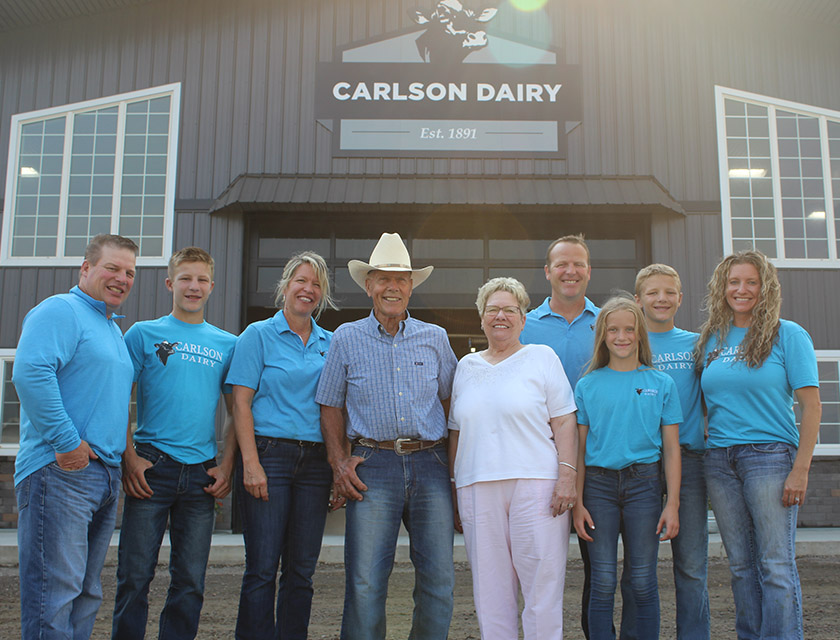Dairy Semen Sales hit 17-Year-Low: What Will the Trend be Going Forward?

With the cost of inflation impacting every corner of a dairy, including the costs to feed heifers, the producer’s breeding strategy has been forced to become finetuned. More and more producers are keeping just enough replacements to fill the pipeline, so it is not surprising that the market for dairy semen sales has hit a 17-year-low, with year-over-year sales dropping nearly 7%, according to the National Association of Animal Breeders (NAAB) data.
With beef-cross calves creating a value-added revenue stream for producers, Beef x Dairy numbers have indeed skyrocketed. The 2021 NAAB year-end report showed that Beef x Dairy sales totaled 8.5 million units, an increase of more than 30% over 2020.
According to Lyle Kruse, Vice President of U.S. market development for Select Sires, Inc., Holstein dairy owners will continue to prioritize strategic use of sexed and Beef x Dairy due to the increased costs of rearing replacements.
“We could still see some growth in Beef x Dairy in the U.S.,” Kruse says. “Most Jersey dairy owners are already intensively using sexed semen and Beef x Dairy, as well as pure-beef embryos.”
Kruse reports that Select Sires has seen a decline in the U.S. on conventional semen sales over the last 4-5 years, while sexed semen sales continue to increase.
“Total dairy semen sales have also declined,” he notes. “Some of this is from the improvement in dairy reproductive efficiency (fewer units needed per pregnancy), but Beef x Dairy is nearing one unit per cow, which is clearly replacing dairy semen.”
Low Culling Rates
With Beef x Dairy ramped up, the question begs to ask, ‘Will we have enough dairy replacements?’ Kruse says he already sees some herds with a 30% or less culling rate.
Kruse shares that based on research from Dr. Albert DeVries and Dr. Chad Dechow, the optimal herd turnover rate to optimize production and not hinder genetic progress is between 25-30%.
“We are not there yet but heading that direction,” he notes. “To get there, dairies will need productive, healthy and reproductively fit older cows.”
However, he remarks that the trend in declining culling levels has occurred for several years, and he expects that to continue. Kruse also states going forward, this will lead to producers honing their genetic selection focus by using indexes that consider more factors affecting longevity, like Select Sires’ Herd Health Profit$™ (HHP$™) or Zoetis Dairy Wellness Profit$® (DWP$®).
Kruse says that dairy owners will start focusing on increasing the percentage of older lactation cows (third lactation and up) to eventually be equal to or more than 40% of total lactating cows.
“Herd management, cow comfort and utilization of technology, such as CowManager®, to aid in accurate individual cow alerts for repro and health management will play a role also,” Kruse remarks.
While we are not there yet, Kruse believes this is what the U.S. is leaning towards. “It also fits our animal care and sustainability needs for the future. Most U.S. dairy owners want to continue to reduce herd replacement costs and harvest additional income by generating excess beef calves from uteruses not needed to gestate replacements,” he says.
With record inflation felt from every angle of the dairy, fine-tuning management must continue, and Kruse says he believes strategic breeding and smart replacement planning is here to stay.
“This includes planning for the most profitable outcome for every pregnancy generated based on the specifics of every individual cow and heifer in the operation,” Kruse notes. “This will include a mix of dairy conventional, dairy sexed and beef conventional and sexed semen and embryos.”
Based on estimates from the USDA-NASS, Chuck Sattler, vice president of the genetic program for Select Sires, shares with his team that the number of replacements is relatively low.
“We only have enough replacements to cull 31-32% of the current dairy cows and this will likely drive herd life and lead to less forced culling of older cows,” Sattler states.
Kruse believes the Beef x Dairy market for semen sales will continue to increase to eventually level off at around 10-11 million units sold per year.
“Some of this decision process is going to be driven by changes in the availability of native beef cattle, replacement dairy heifer prices and the Holstein bull calf prices as well as the level of adaptation for pure-beef embryos,” he says.
Minnesota Producer Perspective
Carlson Dairy, located in Pennock, Minn., has switched up their culling determinations in recent years, especially as they have strategically dialed in on their breeding program.
“We used to cull a lot more, but that has really changed,” one of the owners, Carl Carlson, shares.
Before, cows were culled for mastitis or low production and now cows are only leaving for low production. Carlson’s culling rate hovers between 31-32%.
“We want to keep older lactation cows in the herd longer because obviously we're getting more milk out of them,” he notes.
Understanding their ultimate goals, the Carlson’s began utilizing Beef x Dairy a couple of years ago on both heifers and mature cows.
“Right away we went with using beef, as well as some conventional semen,” Carlson shares. “And now we’re strictly using either beef or sexed.”
The Carlson family milks 2,000 cows and basically raises all replacements on the home site, except for the 15% that are raised by a nearby family member. In addition, they farm 2,500 acres, including 1,000 acres of alfalfa and 1,500 acres of corn, all of which goes back to the dairy to feed cattle.

Before breeding to beef, Carlson was raising excess heifers that they would later sell as bred heifers, but that changed when the market changed. Rising inflation costs increased (swallowed up sounds like lowered to me) the costs of raising heifers and selling bred heifers later didn’t always guarantee a returned profit.
“We weren't getting the money back that we were putting into them,” Carlson shares. “We don't want to raise more heifers than we need because obviously it costs a lot of money to raise a heifer today.”
While the prices for bred heifers have increased with rising milk prices, Carlson says they don’t plan to raise more heifers than they need.
The focus for this Minnesota dairy is to produce 60 heifer calves a month, and their breeding plan has become strategic to reach this goal. Today, 10% of cows are bred to sexed semen while the rest are bred to beef. For the heifers, 50% are bred to sexed while the other half is bred to beef.
An increase in conception rate is proof that the improved management is working. Carlson shares that their current conception rate is 51%. Additionally, the farm relies on a shot program, along with CowScout sensor collars from GEA for heat detection.
Limousine is the breed of choice for Carlson, and he shares that currently he has two buyers for his crossbred calves who pick up calves weekly. Fine-tuned breeding protocols that have introduced Beef x Dairy breeding now generate an additional revenue stream for the operation. Carlson gets $200 per crossbred calf and shares that in 2021 he sold approximately 150 crossbreds a month.
Creating just enough replacements has not only helped Carlson Dairy maintain its herd size, but also generate efficiencies throughout the operation to cushion their bottom line.







